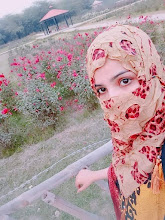Education in North Korea
North Korea ranks first in the world in literacy rates. According to official statistics, a record 99 percent of the country's citizens can read and write. This DPRK has achieved thanks to the compulsory free education, which was introduced in the country in the late 50s. It lasts 12 years, includes the study of general subjects and political education.
Education system
The introduction of compulsory primary education began in the late 40s, but the outbreak of the Korean War slowed down the process. Restoration of schools and their compulsory attendance began only in the mid-50s, and the educational system was adjusted to the early 60s. The basis was taken by Soviet pedagogy, which was tailored to the needs of North Korean society.
The last education reform was carried out in 2012. At that time, a law was passed on compulsory twelve-year education, which is divided into preschool, junior and secondary levels. After that, students go to serve in the army and enter higher education institutions. Education in schools and institutions of another type is free, but parents of schoolchildren are forced to make contributions to maintain school buildings and equipment. So, each student, in fact, pays the "rent" of the room and furniture for the period of study.
Education in higher education is also conducted only on a state basis. Only those who served in the army have the right to enter them. If applicants show enough ability, their lifespan is reduced. Social features are also important for admission: origin, position of parents in society, recommendations from the school and the army.
Three levels of education
Pre-school children attend preparatory classes for two years, starting at the age of five. In this case, only the second stage is obligatory, and parents can skip the first if they wish. In preschool institutions, children learn to write, read, and count, receive their first knowledge of general subjects, engage in creative work and sports.
Here also begin the first steps in political preparation. About who Kim Il Sung is and why he should be loved, the North Koreans have known since childhood.
From the age of seven, children go to junior school, where they spend 4 years. Here they are trained in basic subjects - they study Korean language and literature, history, mathematics, geography, music, and drawing. Mandatory in the program are foreign languages - Chinese, English and Russian. True, they are taught at a low level due to the lack of good textbooks.
But also students of this country have many difficulties associated with access to information. Most people do not have access to the Internet, and as a result, many cannot ask for help in writing various types of academic papers, as students of America do when ask Edu Birdy for help. Most of the population, even the most educated people, do not have the right and the opportunity to find out what is happening in the world in recent years and are not aware of innovative introductions in the field of education in the last decade.
It is connected with the ideological line of the state. Children are forced to learn from Korean books, often poorly compiled. The use of foreign textbooks is fraught with difficulties, since the information in them contradicts what concerns the official Juche ideology.
In high school, children spend another six years. At this time, they deepen the knowledge of basic subjects and begin to learn new ones - physics, chemistry, computer science. About six percent of the load is devoted to patriotic education. Students learn the biography of the leaders, the principles of the political structure of the Juche political system, undergo ideological training - it is particularly strong influence on the teaching of history and literature.
Propaganda training
Despite widespread stereotypes, North Korean schools are not focused only on brainwashing. Children in them receive a wide range of knowledge, albeit unconditionally with an ideological touch. Literature classes study foreign literature - including European, and world history. However, episodes that contradict ideology are removed from texts, and events are presented in such a way that they correspond to the official Party line. For example, in the DPRK, people are convinced that the Korean War was unleashed by the southern side.
The ideological background is found in most school subjects. Since childhood, the government has been preparing citizens for the fact that the country has enemies with whom they may have to fight.
The lessons are imposed on the belief that America and Japan are enemies, and South Korea is the territory of the DPRK temporarily occupied by the Americans.
It is imperative to promote a position on the decadence of capitalism. In the process of learning, they often speculate with facts in order to discourage children from a desire to be interested in the Western world. This explains the closeness of state borders from any external influence. Children are taught that Western countries have nothing to envy, and that their country is the happiest in the world. An exemplary school lesson in North Korea is shown in Vitaly Mansky’s film “In the Rays of the Sun”, which tells about one day in the life of a girl in the DPRK.
Universities of North Korea
Higher education in the country involves training in colleges and institutes. In colleges, depending on the specialty, they study from two to six years. Most of the residents of the cities of the DPRK ended up just such institutions. They give a high level of proficiency in a profession, while studying at an institute or university already implies an increase in the social status of a person, since it is difficult to get into them.
from Everyone's Blog Posts - Fashion Industry Network https://ift.tt/2IAI4b5
 Reviewed by Neha Malik
on
October 03, 2018
Rating:
Reviewed by Neha Malik
on
October 03, 2018
Rating:




No comments: